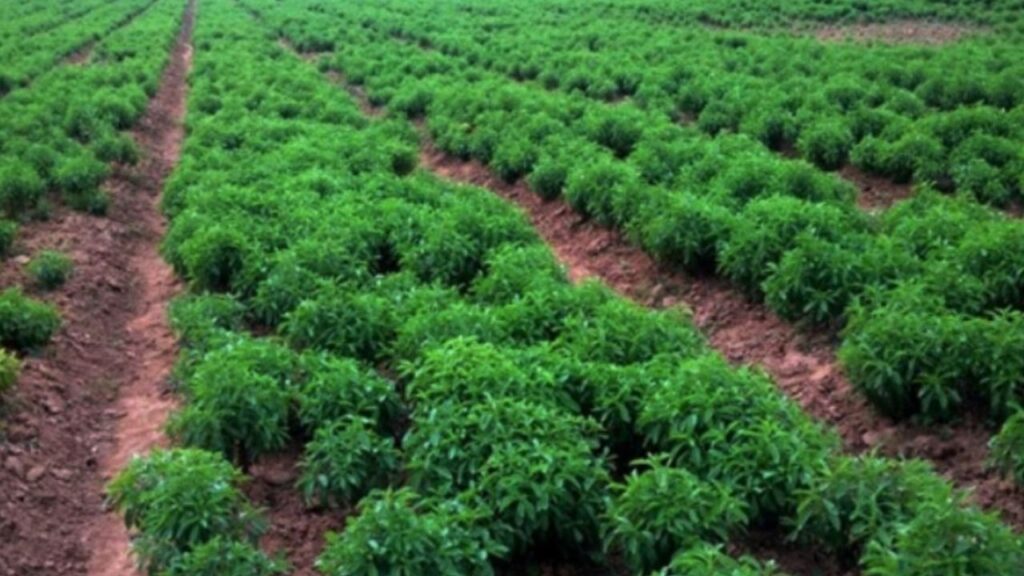Green Valley Stevia stands as a prominent leader in the production of stevia-based natural sweeteners. Devoted to providing products of utmost purity, the company focuses on enhancing overall health and well-being through 100% natural and herbal sweeteners. Notably, these sweeteners boast the advantage of being calorie and carbohydrate-free. Hence, these products become an optimal choice for both diabetics and health-conscious individuals.
The journey embarked on by Rajpal Singh Gandhi, the Chairman and Managing Director of Green Valley Stevia, commenced in 2006 with the cultivation of stevia on a modest 6-acre plot. Facing the absence of processing units in India at that time, Gandhi reached out to the Indian Institute of Technology Bombay. The institute played a crucial role in constructing a prototype for the processing of stevia.
Despite substantial investments, numerous challenges, rigorous research and development, and collaborative efforts involving scientists, engineers, and innovators, Rajpal Singh Gandhi’s commitment to creating healthier sweeteners ultimately bore fruit. Today, Green Valley Stevia not only stands as the largest stevia producer in India but also holds the distinction of being the largest exporter of these natural sweeteners.
In an insightful discussion with The Interview World, Rajpal Singh Gandhi shares the captivating narrative of his venture into stevia farming and processing. The following excerpts capture key highlights from his interview.
Q: How do you envision the future utility of stevia as a sweetener in India, given the prevalent health scenario and the substantial percentage of diabetic patients?
A: India is not on the path to becoming the diabetic capital of the world; it has already reached that point. Several factors contribute to this alarming situation, with excessive sugar consumption standing out as a key driver. While lifestyle choices may play a role, the introduction of chemical processing in sugar production and other related factors, as explained by medical sciences, has exacerbated the problem.
Despite the challenges, nature offers solutions to address these health issues. Human-created problems find their answers in the natural world. Stevia, also known as sweet basil, emerges as a promising solution due to its qualities as a healthy sugar substitute.
Remarkably, there is no reported adverse data or side effects of stevia on human consumption to date. I consistently invite critical data or negative analyses about stevia, yet no such feedback has been received.
Having ventured into stevia cultivation in 2006, I visited numerous countries where the plant was virtually unknown. At that time, no company had embraced stevia cultivation, and farming guidelines were scarce. Through my efforts and sources, I managed to gather some initial guidelines for stevia cultivation.
My curiosity about Japan, which has been the largest consumer of stevia since 1970, fueled my interest. If the Japanese, with 60% of their population using stevia, have embraced it as a healthy sweetener, why not others? This question motivated my research, leading me to the conclusion that stevia could be a viable and healthy alternative.
Transitioning from my profession as an advocate, I purchased land to become a stevia farmer. This marked the beginning of my journey into stevia farming.
Q: Could you elaborate on the journey of stevia farming?
A: Embarking on my farming journey, I encountered a significant challenge – a surplus of stevia crops with no buyers in sight. I diligently packed the bumper crop into bags, only to discover a lack of processing units in India. This raised a crucial question: Why was there an absence of processing facilities in the country? It occurred to me that perhaps the root cause lay in the absence of supportive technology.
Digging deeper, I questioned the lack of technology and found it traced back to a lack of initiative. This presented a formidable challenge, forcing me to contemplate closing down the farming venture or elevating it to the next level. Undeterred, I chose the latter and embarked on a journey of research and development (R&D).
In a strategic partnership with IIT Bombay as my technology collaborator for a pilot unit, two years of intensive research unfolded. The international market’s dissatisfaction with the taste of processed stevia products prompted me to explore various countries. My dual mission emerged – to pioneer stevia processing in India and to achieve this organically, without any chemicals, aligning with the inherently organic nature of medicinal plant farming.
Much like sugar cane processing, which often involves unavoidable chemicals, I aimed for a natural approach. Although sugar is generally regarded as beneficial, the chemical processing detracts from its health benefits. This realization fueled my commitment to creating a healthier alternative, akin to natural sugar found in sources like sugar cane juice.
During my exploratory journey, I visited China, contemplating the paradox of India being an organic country with a rich tradition of Ayurveda, while South America claimed stevia as a native plant for over 1,500 years. Skepticism lingered until an unexpected revelation in a Shanghai Buddha temple. Delving into the tea section, I uncovered a box labeled as Mahatma Buddha’s favorite tea – stevia leaves, which proved to be five times more beneficial than conventional green tea.
This discovery sparked a profound realization about stevia’s potential as a sugar substitute for the future of mankind. Armed with this vision, I delved into commercial production and sought support from the Department of Science and Technology, Government of India. Despite initial rejection, perseverance led to a sanctioned application in the second year.
Undeterred, I established the first innovative unit in India dedicated to producing stevia sugar. Thus, my journey with stevia evolved into a testament to determination, research, and a commitment to fostering a healthier alternative to sugar.
Q: What are the key benefits of stevia?
A: Now, let’s delve into the advantages of stevia, which extend to various facets of society, benefiting farmers, the environment, and governments alike. The primary focus is on enhancing the well-being of all sections of society, starting with farmers.
First and foremost, stevia cultivation proves to be financially rewarding for farmers. The income from stevia farming sees a substantial increase, ranging from a minimum of double to triple that of traditional crops, amounting to Rs. 1 lakh to 1 lakh 50 thousand per acre annually. Notably, stevia is a perennial crop, requiring a one-time plantation and enabling harvesting every three months for five consecutive years.
The environmental benefits of stevia cultivation are equally compelling. Unlike conventional crops, stevia does not necessitate the use of chemical fertilizers or pesticides. Remarkably, its water consumption is a mere 5% of that required for sugarcane. To put it in perspective, while 1500 liters of water are needed to produce 1 kg of cane sugar, stevia requires only 5-7 liters.
Moving on to the impact on soil health, stevia cultivation ensures organic soil by default. The exclusive use of neem oil and neem cake, both organic, eliminates the need for harmful chemicals. This holistic approach contributes to the well-being of farmers, promotes environmental sustainability, and positively affects the state. Notably, the absence of straw burning is a notable consequence.
Moreover, the benefits extend beyond financial and environmental realms. Stevia proves to be a versatile crop as all parts of the plant are utilized. Interestingly, even the stem of stevia holds value for animals, particularly those involved in milking. Thus, stevia emerges as a multifaceted solution with far-reaching positive implications for society, agriculture, and the environment.
Q: Do you want the government to formulate any policy for stevia as they are doing it for other crops?
A: Certainly. I want to convey to the government that Stevia is beneficial from various perspectives. However, there is a crucial gap that needs attention. Presently, there is a notable absence of Stevia as a mandatory crop in Indian agricultural universities. This omission is evident in our educational mandates, putting us significantly behind China. Unlike India, China recognized Stevia as a natural sweetener nearly four decades ago. To bridge this gap and capitalize on Stevia’s benefits, it is imperative to integrate it into our agricultural education curriculum promptly.
Q: What are the current market dynamics in the usage of stevia?
A: The landscape is evolving as Pepsi and Coke have integrated stevia into their beverages, albeit not within India. This change is unfolding on a global scale, leaving India untouched for now. Pepsi has introduced stevia in the form of 7up, emphasizing that India, being an agricultural country, holds a unique position. Despite the absence of local launches, my confidence lies in India’s capability to cultivate and export stevia worldwide. This confidence stems from the potential to accrue substantial foreign currency earnings, envisioning a 100% export-oriented venture. Such a strategic move promises benefits on multiple fronts – for farmers, the nation, and export companies alike.



